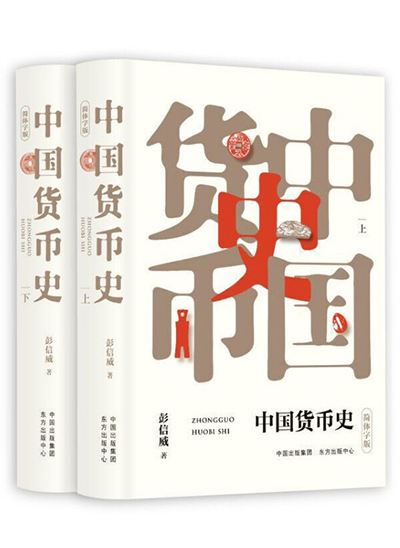A classic monetary history of ancient China

A Monetary History of China
Authored by Peng Xinwei (1908–1967), a famous scholar on monetary history and a numismatist, A Monetary History of China is a classic work that well integrates the history and theory of money in China. The book discusses China's monetary history from the establishment of monetary economies until the late Qing Dynasty (1644–1911) in chronological order. It covers the monetary system, monetary purchasing power, monetary studies, credit, and credit institutions at each stage.
First published in 1954 and finalized in 1965 after repeated revisions and additions, the book is of groundbreaking significance for the study of Chinese monetary history. This seminal academic work still has significant academic value after half a century. Many current achievements made in monetary history have been deeply influenced by this book.
According to Peng, China's monetary development was essentially not affected by foreign cultures, but formed an independent monetary culture. The functions of money were not centralized under one monetary form. Gold and silver were usually taken as the unit of account and the store of value, while copper coins were mainly used in market circulation. Lacking the system of functional and fractional currencies, there was often parallel circulation of multiple currencies in actual circulation. Among these currencies there was no fixed exchange rate, which then often blindly fluctuated with market prices.
The production and circulation of money were heavily local. Currencies in circulation varied greatly in different regions. In addition, a relatively primitive and stagnant minting technology made it difficult to unify the specific color and weight of currency for a long time. Private coining further aggravated the chaos of this monetary system, though it was the coining of private money, not its circulation that was banned in ancient China.
Although the weight of China's major coins remained unchanged for a long time, this does not mean monetary systems and prices were stable. As such, the book also focuses on changes in monetary purchasing power in China.
China's monetary purchasing power sometimes changed drastically in the short term, but decreased gradually when viewed over a longer period of time. Since the Han Dynasty (206 BCE–220), there were at least five or six times when prices skyrocketed, increasing more than 10,000 fold, not mentioning the numerous small fluctuations caused by natural or man-made disasters. Without accurately understanding changes in monetary value, it would be easy to draw the wrong conclusions from historical data. Only by understanding changes in monetary purchasing power can we more accurately interpret the income and living standards of the people in different periods.
Chen Pengfei is from the Department of History at Sun Yat-sen University.
Edited by YANG LANLAN
